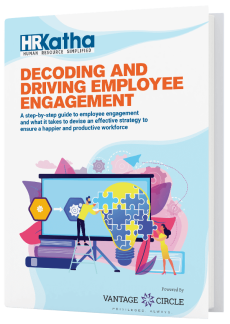An Overview Of Employee Development

There is a reason why employees are regarded as talents. They are the most valuable part of your company. But when considering business goals and development programs, employee development usually ends up at the bottom of the list.
Why is that?
Leaders are often constrained by time and resources. As a result, they focus on short-term and medium-term goals rather than long-term ones.
They are focused on the pot of gold that lies at the end of the rainbow—especially startups that tend to be more result-oriented than the established players.
This leads to employee development taking a hit and ends up at the bottom of the barrel.
Investing in employee development is one of the best things you can do for your company. It helps you improve employee engagement, attract top talents and reduce attrition.
The stats below will prove that I am not making stuff up.
-
According to a 2018 survey, 94% of employees prefer companies that provide professional training and career development.
-
More than 50% of employees would go for an online course if their managers suggested.
-
75% of current employees are looking for opportunities for skill development.
-
68% of top talents consider career development and development programs their numero uno criteria when applying for a job.
-
Every dollar invested in e-learning returns $30 in productivity.
Before going any further, let us first understand what exactly employee development is.
What is Employee Development?
Employee development is the initiative taken by both employees and employers to update and upgrade the workforce's existing skills. It is usually done by training and developing the latest know-how of the industry and elevating the knowledge of the employees.
There are different types of development that you should look out for.
Long Term Development
It refers to the change or up-gradation of a conventional or existing system that is the norm for a long time.
The introduction of computers in an organization can be identified as long-term development.
Short Term Development
It usually refers to the development done by employee training and training programs.
This enables employees to gain knowledge and enhance both their technical and soft skills.
The introduction of concepts like working from home or online courses which introduce a new working concept can be categorized under short-term development.
Let's look at some ways how we can create badass employee development programs.
1. Identify Your Business Goals
Before creating a development program, your first step should be to identify your business idea.
If your business specializes in big data, it doesn't make sense to invest in a sales program.
Considering your business goals and company ensures your training programs have a full impact.
2. Identify The Gaps in the Skillset of Your Workforce
Identify how the lack of both technical and soft skills is hindering your business goals. By pinpointing the specific skill sets required by your employees to meet your business goals, you can optimize your development programs.
Categorize the potency of the gaps so that you can prioritize the urgency of the training program required.
3. Professional Training Programs/Online Courses
This is one of the most apparent steps because it's the most important.
Professional training ensures competency and excellence at your workplace. Create a knowledge base of the critical information that needs to be passed to your new top talents.
Professional training has a close relationship with the point mentioned previously.
It is identifying the gaps in your workforce. This will make sure you optimize your training programs by targeting areas that require immediate attention.
4. The Thin Line between Willingness And Potential
This is one of the areas where managers usually make a mistake.
Just because Rahul can be a good manager, it doesn't automatically imply that he is ready to become one.
Willingness to get into long-term development programs is one of the key areas that managers ignore. The results will often be counterproductive if you push your employees to an area where they do not want to tread.
But it's just a development program. My employees shouldn't have a problem doing through training and developing!
Yes and no. Yes, in the end, it is a means of employee training. But where does it lead to? You are going to implement those new ideas in your production. So it makes sense that your employees are willing for the long-term change you will make in your workforce.
5. Inter-Departmental Training
Most leaders make a mistake in that they view their office structure as an independent. To some extent, it makes sense.
The sales team has nothing to do with the app development team, right?
Not as much as you think.
We like to think of businesses as a dynamic ecosystem. All the companies are connected, just like all the organisms in an ecosystem are interdependent.
So to improve employee engagement and productivity, it is essential to conduct cross-departmental training.
Cross department training need not go into specifics and details. Just the basic concepts of the other departments' work will suffice.
By doing this, you develop your employees' skillsets and improve communication and productivity in the workplace.
6. Understanding Those Soft Skills
A new idea is emerging in businesses. The idea that soft skills are now obsolete.
Even the name soft-skills makes leaders cringe.
The truth could not be further from this.
According to Dan Goleman,of Harvard Business School, emotional intelligence is as important as technical know-how.
Self-awareness, empathy, and, communication plays a huge role in increasing the productivity of the workplace.
Try bringing in a professional to train your employees on how to interpret body language and effective communication.
Right now it might not seem like a very urgent area to improve in. But keep in mind we are talking about long term goals and productive. An engaged workforce and harmonious workforce always end up being more productive.
Finally
Providing your employees with the right combination of tools to do their jobs well and grow as professionals have many benefits.
Not only your employees are happier and satisfied, but they are also more likely to stay and reduce attrition. A happier workforce becomes more productive and contributes to the growth of the organization. This also stems down to a steller employee branding.
And of course, your reputation as an organization with state of the art training program helps a lot in your employee branding and brand positioning. Top talents are always on a lookout for organizations where they can learn and grow.

Vantage Circle is a simple AI-powered Rewards & Recognition Platform for upgrading your employee experience and engagement for better productivity.





